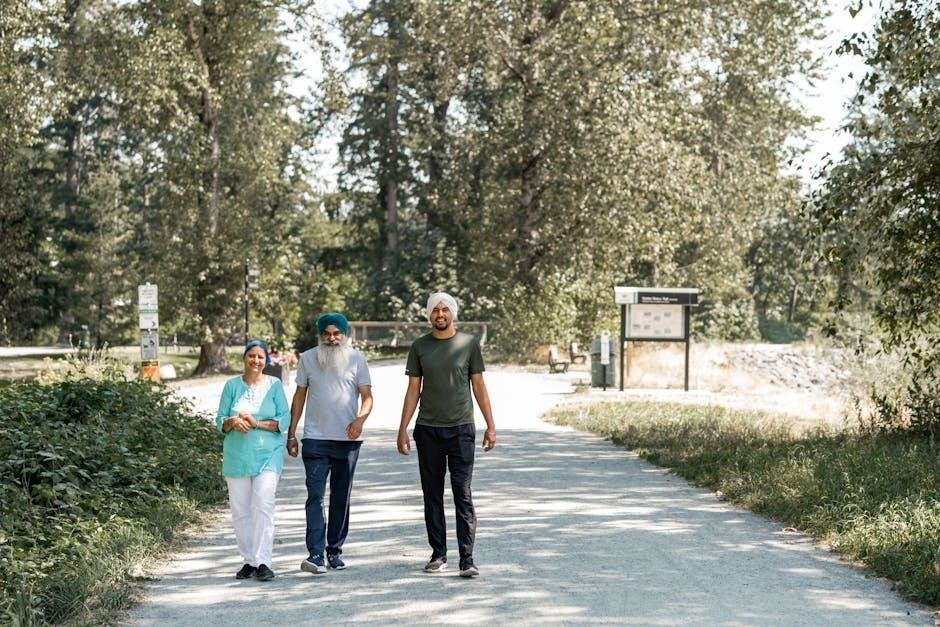Cultural competence is essential in healthcare to address diverse patient needs effectively. This section explores the significance of understanding cultural heritage and health traditions, emphasizing their impact on health behaviors and outcomes.
Overview of the 9th Edition
The 9th edition of Cultural Diversity in Health and Illness, authored by Rachel E. Spector and published by Pearson in 2016, is a comprehensive resource for understanding the complexities of cultural competence in healthcare. Designed for courses in community and public health nursing, transcultural nursing, and continuing education, this edition examines the cultural dimensions of health and illness, emphasizing the importance of recognizing and respecting diverse cultural heritage and health traditions. It addresses healthcare disparities, provides updated research, and offers practical strategies for delivering culturally sensitive care. This edition is a valuable tool for healthcare professionals aiming to improve outcomes for diverse patient populations.
Significance of Cultural Competence in Healthcare
Cultural competence in healthcare is crucial for delivering effective and respectful care to diverse patient populations. It ensures that healthcare providers understand and address the unique cultural beliefs, practices, and values of their patients. This competence helps bridge communication gaps, reduces healthcare disparities, and improves patient outcomes. By fostering a culturally sensitive environment, healthcare professionals can build trust and ensure that care is tailored to meet the specific needs of individuals from varied backgrounds. The 9th edition emphasizes these aspects, providing strategies to enhance cultural awareness and improve cross-cultural interactions in clinical settings.

Key Concepts in Cultural Diversity
This section introduces foundational ideas about cultural diversity, focusing on how cultural heritage shapes health beliefs, traditions, and practices, influencing patient care and health outcomes.

Cultural Heritage and Its Impact on Health
Cultural heritage significantly influences health behaviors and outcomes. Traditions, values, and beliefs passed through generations shape perceptions of health and illness, affecting treatment preferences and adherence.
Health Traditions and Beliefs Across Cultures
Health traditions and beliefs vary widely across cultures, influencing how individuals perceive illness and choose treatments. These beliefs often stem from cultural values, spirituality, and community practices, impacting patient-provider communication and care outcomes.
Healing Traditions and Practices
Healing traditions reflect diverse cultural practices, emphasizing holistic approaches that integrate spiritual, herbal, and communal methods to restore well-being and balance in health and illness.
Traditional Healing Methods in Different Cultures
Traditional healing methods vary widely across cultures, often reflecting local beliefs, values, and resources. Indigenous practices may include rituals, herbal remedies, and spiritual ceremonies to restore balance. In many Asian cultures, practices like acupuncture, Ayurveda, and traditional Chinese medicine emphasize harmony between mind, body, and environment. Similarly, Latin American traditions such as curanderismo blend spiritual and natural healing techniques. These methods often involve community participation, reinforcing cultural identity and social support. Understanding these practices is crucial for healthcare providers to deliver culturally sensitive care, as highlighted in the 9th edition of Cultural Diversity in Health and Illness.
Integrating Traditional Practices into Modern Healthcare
Integrating traditional healing practices into modern healthcare enhances cultural competence and patient satisfaction. This approach recognizes the value of complementary therapies, such as acupuncture and herbal medicine, alongside conventional treatments. By respecting patients’ cultural beliefs, healthcare providers can foster trust and improve health outcomes. For instance, incorporating traditional rituals or spiritual practices into care plans can address holistic well-being. However, integration requires collaboration between practitioners and understanding of evidence-based standards. The 9th edition of Cultural Diversity in Health and Illness emphasizes the importance of blending these practices to create inclusive, patient-centered care systems that honor diverse cultural perspectives while maintaining therapeutic effectiveness.

Familial and Community Influences on Health
Families and communities significantly shape health behaviors and outcomes through shared cultural values and support systems, influencing decisions and providing emotional and practical care.
Role of Family in Health and Illness
The family plays a pivotal role in shaping health behaviors and illness responses, often serving as the primary source of emotional, physical, and financial support. Cultural values and beliefs are frequently passed down through generations, influencing attitudes toward health and healthcare providers. Families may also act as caregivers, providing day-to-day assistance with medications, nutrition, and personal care. In many cultures, family decisions regarding health are collective, emphasizing harmony and respect for elders. This collective approach can either facilitate or create barriers to seeking professional medical care. Understanding these dynamics is crucial for healthcare providers to deliver culturally sensitive and effective care that respects familial influences while addressing individual needs.
Community Support Systems in Healthcare
Community support systems play a vital role in healthcare, offering emotional, social, and practical assistance to individuals and families. These systems, which include local organizations, religious groups, and cultural associations, often provide health education, disease prevention programs, and access to resources. In culturally diverse populations, community support systems may also include traditional healers and cultural leaders who influence health beliefs and practices. Effective community support systems can enhance health outcomes by addressing cultural and linguistic barriers. However, their effectiveness may vary depending on resources and cultural alignment with modern healthcare practices. Collaborating with these systems can bridge gaps between healthcare providers and diverse patient populations, fostering trust and improving care delivery. Such partnerships are essential for promoting equity and cultural competence in healthcare.

Modern Healthcare and Cultural Diversity
Modern healthcare must address cultural diversity to provide equitable care. Understanding diverse beliefs, practices, and values ensures culturally competent interventions, improving health outcomes across populations.
Challenges in Providing Culturally Competent Care

Providing culturally competent care presents significant challenges, including understanding diverse health beliefs, language barriers, and varying cultural practices. Healthcare providers must navigate these differences while avoiding stereotypes and biases. Additionally, the increasing diversity of patient populations requires continuous education and adaptability. Cultural competence is not a one-time achievement but an ongoing process. Addressing these challenges ensures equitable and effective care, fostering trust between providers and patients. The 9th edition of Cultural Diversity in Health and Illness emphasizes strategies to overcome these obstacles, promoting inclusive and person-centered healthcare practices.

Strategies for Effective Cross-Cultural Communication
Effective cross-cultural communication is vital for delivering high-quality, patient-centered care. Strategies include active listening, asking open-ended questions, and using interpreters when language barriers exist. Healthcare providers should also assess patients’ cultural beliefs and practices to tailor care appropriately. Building trust through empathy and respect is essential. Continuous cultural competence training and self-reflection can enhance providers’ skills. Additionally, incorporating family and community perspectives into care plans fosters collaboration and improves outcomes. These strategies, as emphasized in the 9th edition of Cultural Diversity in Health and Illness, help bridge cultural gaps and ensure equitable care for diverse populations;

Population-Specific Health and Illness Perspectives
This section examines health disparities and cultural beliefs among specific populations, focusing on American Indian, Alaska Native, and Asian communities, addressing their unique health challenges.

Health and Illness in American Indian and Alaska Native Populations
American Indian and Alaska Native populations face unique health challenges due to cultural, historical, and environmental factors. Their health perspectives often blend traditional practices with modern medicine. Historical trauma and limited access to healthcare contribute to disparities in chronic diseases like diabetes and cardiovascular conditions. Cultural beliefs emphasize harmony with nature and community-centered care, influencing treatment preferences. Addressing these populations’ health requires understanding their distinct cultural values and integrating traditional healing methods into conventional healthcare strategies. This approach fosters trust and improves health outcomes, respecting their heritage while providing effective care.
Health and Illness in Asian Populations
Asian populations exhibit diverse health beliefs and practices shaped by their cultural heritage. Many Asian cultures emphasize holistic health approaches, combining traditional remedies with modern medicine. Spiritual and philosophical frameworks, such as yin-yang in Chinese culture, influence perceptions of illness and treatment. Family and community play a significant role in health decisions, often prioritizing collective well-being over individual care. Communication styles may vary, with some populations preferring indirect or hierarchical interactions. Understanding these cultural nuances is crucial for providing culturally competent care, ensuring that healthcare practices respect and integrate the values of Asian patients, thereby improving health outcomes and patient satisfaction.
